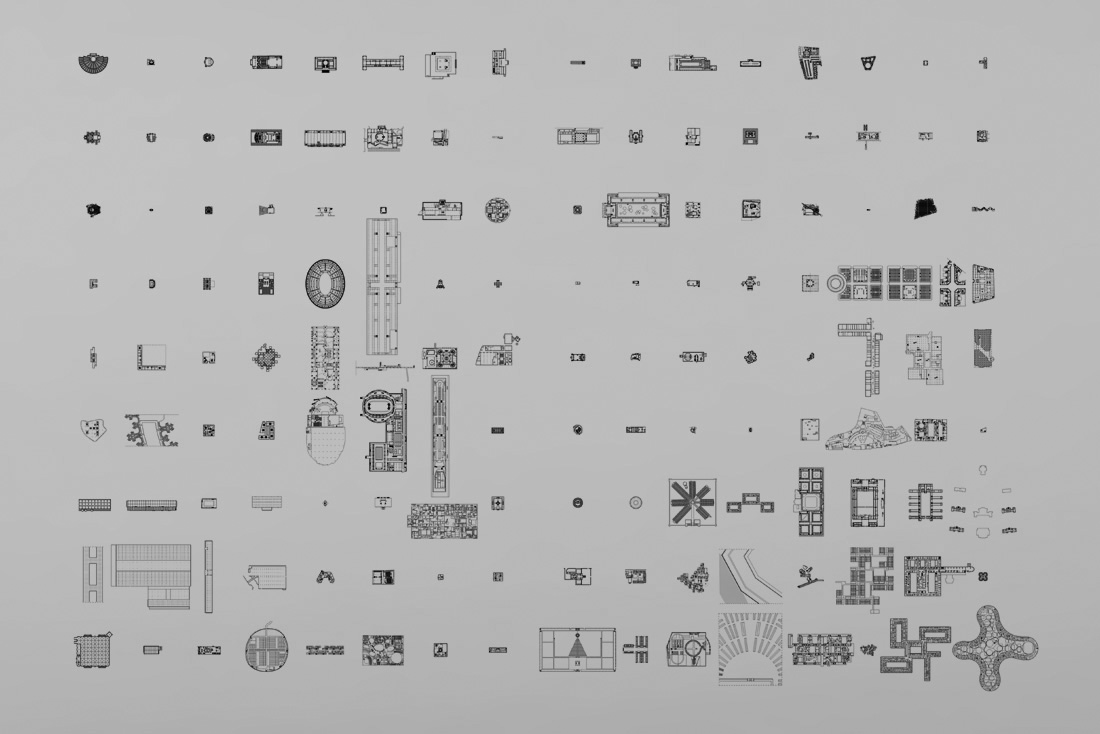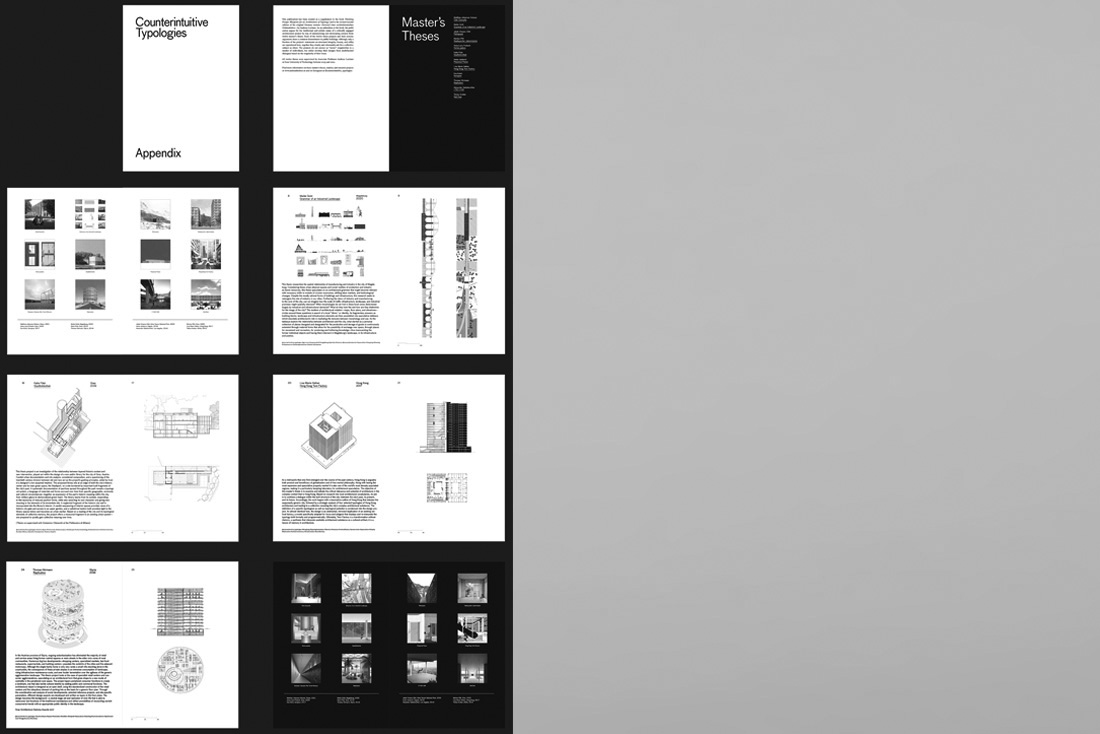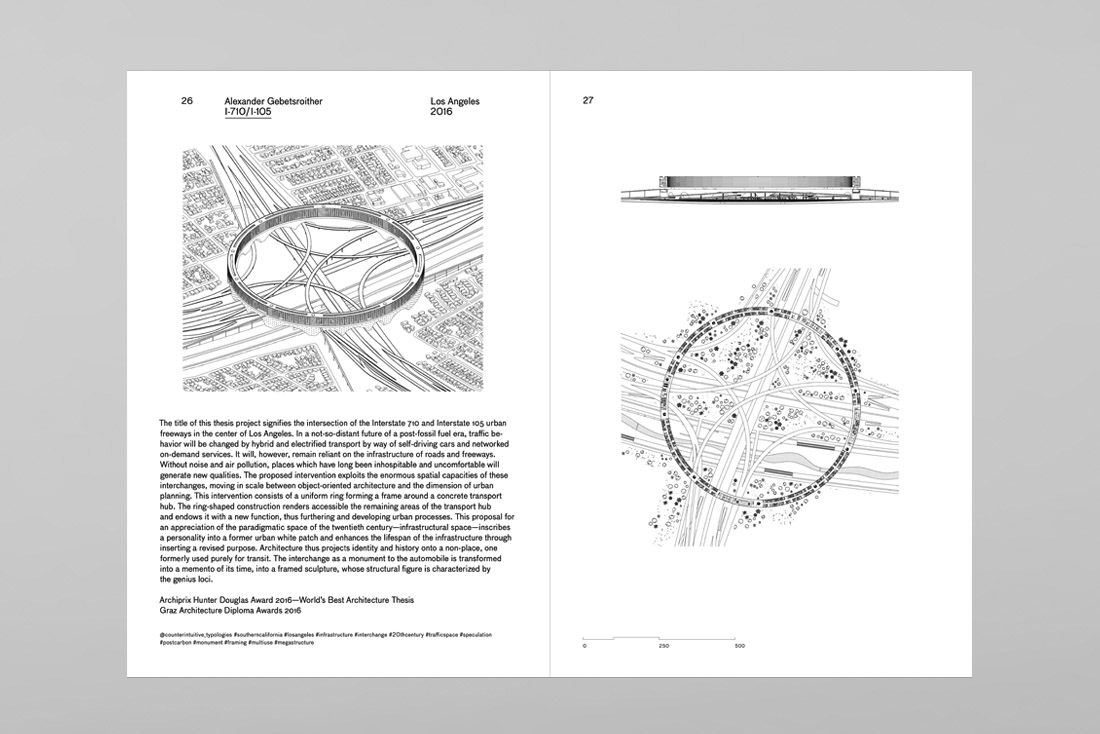About
Andreas Lechner’s research and teaching at the Faculty of Architecture, Graz University of Technology, are framed by the program Counterintuitive Typologies.
Anchored in a three-year research project funded by the Austrian Research Promotion Agency (FFG), this initiative extends across international collaborations, design studios, electives, master’s theses, and PhD projects.
By foregrounding upcycling and adaptive reuse while re-examining the very notion of “type,” Counterintuitive Typologies confronts the shifting conditions of architectural practice and seeks to recalibrate the epistemological framework of architecture as both an art and a science of building. Architecture is here understood as a critical medium for negotiating the tension between cultural relevance and the material imperatives of circularity—offering programmatic design perspectives distinct from those of other sciences or arts.
Building on abductive, inductive, and deductive reasoning, the project investigates the contradictions and temporalities that shape contemporary architectural work, aiming to reposition its disciplinary agency and agendas. It engages the friction between entrenched typological models and emergent needs generated by global environmental, social, and technological shifts. In doing so, Counterintuitive Typologies insists on architecture’s material and practical concerns, while situating it within broader epistemological and cultural discourses.
The ethos behind this resists the two symptomatic positions of today’s disciplinary impasse as identified by Stanislaus von Moos and Martino Stierli:
Counterintuitive Typologies thus articulates a third trajectory: architecture as a hybrid projective practice that confronts ecological, cultural, and disciplinary contradictions by transforming existing forms and reimagining their futures.
Thinking Design
The launch of Counterintuitive Typologies coincided with the preparation of the second German and first English edition of Thinking Design – Blueprint for an Architecture of Typology (Park Books, 2021) [fig. 1]. Rooted in Aldo Rossi’s understanding of the city as a constellation of monuments, traces, and collective memory, the book reinterprets typology through contemporary concerns. It presents 144 significant public buildings [fig. 2], spanning from antiquity to the present, organized into three chapters—Tectonics, Type, Topos—and grouped into twelve civic categories: theater, museum, library, state, office, recreation, religion, retail, factory, education, surveillance, and hospital. Each is illustrated at the same scale, in plans, sections, and axonometrics, occasionally complemented by key elevations [figs. 3, 4]. The uniform graphic treatment enables comparative reading, emphasizing architecture not as isolated works of genius, but as fragments within a larger typological field.
An accompanying booklet, Counterintuitive Typologies, applies these methods to twelve design theses exploring the edges of urban environments: peripheral conditions, commercial vernaculars, and city outskirts [fig. 5].
![Fig. 1 Book cover of Thinking Design - Blueprint for an Architecture of Typology, Zurich: Park Books 2021.]()
![Fig. 2 Plans of 144 projects featured in Thinking Design - Blueprint for an Architecture of Typology drawn at the same scale encompassing theater, museum, library, state, office, recreation, religion, retail, factory, education, surveillance, and hospital structures.]()
![Fig. 3 Page spread of category “retail” with plans at same scale, building types and key literatures.]()
![Fig. 4 Aldo Rossi’s “Teatro del Mondo” with plan, section, and axonometric drawings plus a brief text describing central aspects of the composition.]()
![Fig. 5 “Counterintuitive Typologies” is the title of an enclosed booklet with 12 supervised Master’s theses that is published as a supplement to Thinking Design: Blueprint for an Architecture of Typology.]()
![Fig. 6 Page Spreads from booklet “Counterintuitive Typologies” with twelve master’s theses supervised by Andreas Lechner at TU Graz between 2015 and 2021.]()
![Fig. 7 Extract from Alexander Gebetsroither’s diploma thesis I-710/I-105 #more than infrastructure on a Los Angeles highway interjunction from 2016. This thesis was awarded Archiprix world’s best graduate thesis in 2017.]()
Peripheral Monument
Derived from master’s theses supervised by Andreas between 2015 and 2021, these design investigations challenge mainstream typologies by asking which future “monuments” might emerge from more peripheral landscapes [fig. 6, 7]. In doing so, they highlight how architecture can engage with ‘marginal’ sites as a significant part of its disciplinary purview. Counterintuitive Typologies seeks to develop an approach to architecture that is simultaneously responsive to material realities and culturally engaged. By revisiting typology, it aims to reconcile architecture’s disciplinary semi-autonomy with the fluctuating conditions of contemporary life. In so doing, it challenges the concept of the architectural work as an isolated object, emphasizing instead the fluid interplay of cultural production, material processes, and the broader socio-political and environmental contexts in which architecture operates.
Invention and Critique
Through years of teaching architectural design studios, one comes to appreciate the enduring tension between the pursuit of good design and the demands of critical reflection—not as a flaw to be resolved, but as a fertile ground for thought. Design thrives on clarity, synthesis, and intuition; critique unsettles, questions, and complicates. The studio, at its best, becomes a space where these opposing impulses are held in productive suspension—a site where form is not simply shaped, but interrogated. A research trajectory such as Counterintuitive Typologies embraces this tension, using the constraints and expectations of typology as a terrain for both invention and critique. Here, the intuitive and the analytical do not cancel one another out but co-constitute a richer architectural understanding. It must be said: even a certain “dumbness”—a bluntness of form, a naïve gesture—can, at times, serve design well, allowing ideas to surface before they are theorized. But such productive simplicity must never be mistaken for a viable stance toward the world. In the face of structural injustice and ecological precarity, architecture must be more than eloquent; it must also be awake.
(2024)
With the book Architectural Affordances – Typologies of Umbau, a second milestone is achieved that consolidates Andreas trajectory of research, teaching, and design practice centered on typological transformation and adaptive reuse. Building on the theoretical foundations laid in Thinking Design – Blueprint for an Architecture of Typology, this volume extends the inquiry into the political, ecological, and cultural dimensions of building upon the built. It not only brings together a corpus of projects, drawings, and texts that exemplify the methodology of Umbau, but also articulates a broader epistemological framework in which affordance theory, typological reasoning, and ecological care converge.
(update, Aug 2025)
![]()
Fig. 8 Page spreads from Thinking Design - Blueprint for an Architecture of Typology
Team
Andreas Lechner (PI)
Maike Gold (Project Assistant & PhD candidate)
Laura Suvieri (PhD Candidate)
Sabine Kastner (PhD Candidate, www.sabinekastner.com)
Maria Schenkel (Student assistant)
Anchored in a three-year research project funded by the Austrian Research Promotion Agency (FFG), this initiative extends across international collaborations, design studios, electives, master’s theses, and PhD projects.
By foregrounding upcycling and adaptive reuse while re-examining the very notion of “type,” Counterintuitive Typologies confronts the shifting conditions of architectural practice and seeks to recalibrate the epistemological framework of architecture as both an art and a science of building. Architecture is here understood as a critical medium for negotiating the tension between cultural relevance and the material imperatives of circularity—offering programmatic design perspectives distinct from those of other sciences or arts.
Building on abductive, inductive, and deductive reasoning, the project investigates the contradictions and temporalities that shape contemporary architectural work, aiming to reposition its disciplinary agency and agendas. It engages the friction between entrenched typological models and emergent needs generated by global environmental, social, and technological shifts. In doing so, Counterintuitive Typologies insists on architecture’s material and practical concerns, while situating it within broader epistemological and cultural discourses.
The ethos behind this resists the two symptomatic positions of today’s disciplinary impasse as identified by Stanislaus von Moos and Martino Stierli:
“The discipline today seems to be torn between an activist stance that refuses to engage in the politics of form, insisting instead on the primacy of social planning and on the management of economic interests and conflicts that precede design decisions, and a complacent one, which contents itself with serving the growing demands of the culture industry, producing luxury commodities for high-end consumption.” (Eyes that Saw – Architecture After Las Vegas, Zurich: Scheidegger & Spieß, 2020, 13–14)
Counterintuitive Typologies thus articulates a third trajectory: architecture as a hybrid projective practice that confronts ecological, cultural, and disciplinary contradictions by transforming existing forms and reimagining their futures.
Thinking Design
The launch of Counterintuitive Typologies coincided with the preparation of the second German and first English edition of Thinking Design – Blueprint for an Architecture of Typology (Park Books, 2021) [fig. 1]. Rooted in Aldo Rossi’s understanding of the city as a constellation of monuments, traces, and collective memory, the book reinterprets typology through contemporary concerns. It presents 144 significant public buildings [fig. 2], spanning from antiquity to the present, organized into three chapters—Tectonics, Type, Topos—and grouped into twelve civic categories: theater, museum, library, state, office, recreation, religion, retail, factory, education, surveillance, and hospital. Each is illustrated at the same scale, in plans, sections, and axonometrics, occasionally complemented by key elevations [figs. 3, 4]. The uniform graphic treatment enables comparative reading, emphasizing architecture not as isolated works of genius, but as fragments within a larger typological field.
An accompanying booklet, Counterintuitive Typologies, applies these methods to twelve design theses exploring the edges of urban environments: peripheral conditions, commercial vernaculars, and city outskirts [fig. 5].







Peripheral Monument
Derived from master’s theses supervised by Andreas between 2015 and 2021, these design investigations challenge mainstream typologies by asking which future “monuments” might emerge from more peripheral landscapes [fig. 6, 7]. In doing so, they highlight how architecture can engage with ‘marginal’ sites as a significant part of its disciplinary purview. Counterintuitive Typologies seeks to develop an approach to architecture that is simultaneously responsive to material realities and culturally engaged. By revisiting typology, it aims to reconcile architecture’s disciplinary semi-autonomy with the fluctuating conditions of contemporary life. In so doing, it challenges the concept of the architectural work as an isolated object, emphasizing instead the fluid interplay of cultural production, material processes, and the broader socio-political and environmental contexts in which architecture operates.
Invention and Critique
Through years of teaching architectural design studios, one comes to appreciate the enduring tension between the pursuit of good design and the demands of critical reflection—not as a flaw to be resolved, but as a fertile ground for thought. Design thrives on clarity, synthesis, and intuition; critique unsettles, questions, and complicates. The studio, at its best, becomes a space where these opposing impulses are held in productive suspension—a site where form is not simply shaped, but interrogated. A research trajectory such as Counterintuitive Typologies embraces this tension, using the constraints and expectations of typology as a terrain for both invention and critique. Here, the intuitive and the analytical do not cancel one another out but co-constitute a richer architectural understanding. It must be said: even a certain “dumbness”—a bluntness of form, a naïve gesture—can, at times, serve design well, allowing ideas to surface before they are theorized. But such productive simplicity must never be mistaken for a viable stance toward the world. In the face of structural injustice and ecological precarity, architecture must be more than eloquent; it must also be awake.
(2024)
With the book Architectural Affordances – Typologies of Umbau, a second milestone is achieved that consolidates Andreas trajectory of research, teaching, and design practice centered on typological transformation and adaptive reuse. Building on the theoretical foundations laid in Thinking Design – Blueprint for an Architecture of Typology, this volume extends the inquiry into the political, ecological, and cultural dimensions of building upon the built. It not only brings together a corpus of projects, drawings, and texts that exemplify the methodology of Umbau, but also articulates a broader epistemological framework in which affordance theory, typological reasoning, and ecological care converge.
(update, Aug 2025)

Fig. 8 Page spreads from Thinking Design - Blueprint for an Architecture of Typology
Team
Andreas Lechner (PI)
Maike Gold (Project Assistant & PhD candidate)
Laura Suvieri (PhD Candidate)
Sabine Kastner (PhD Candidate, www.sabinekastner.com)
Maria Schenkel (Student assistant)
Counterintuitive Typologies
Research Group (TU Graz)
Associate Professor
Dr. Andreas Lechner
Copyright
The information provided by the individual institutes and other facilities of Graz University of Technology as well as the other information providers is compiled independently by them, and entered into the system.
© Copyright unless otherwise indicated of Andreas Lechner or the authors or of Graz University of Technology
Privacy Statement
Datenschutzerklärung
For more information on privacy: http://datenschutz.tugraz.at
Supported by cargo.site
Last update: 02/02/2025
![TU Graz]()
Funded by FFG - Austrian Research Promotion Agency
![FFG]()
Research Group (TU Graz)
Associate Professor
Dr. Andreas Lechner
Copyright
The information provided by the individual institutes and other facilities of Graz University of Technology as well as the other information providers is compiled independently by them, and entered into the system.
© Copyright unless otherwise indicated of Andreas Lechner or the authors or of Graz University of Technology
Privacy Statement
Datenschutzerklärung
For more information on privacy: http://datenschutz.tugraz.at
Supported by cargo.site
Last update: 02/02/2025
Funded by FFG - Austrian Research Promotion Agency

Liability
The entire content of the Counterintuitive Typologies website has been compiled with the greatest care and to the best of our knowledge. However, we can assume no liability for the actuality, completeness and correctness of all the web pages. Content shall be removed immediately from the time that knowledge of a specific infringement of rights is obtained; TU Graz shall not be held liable before this time.
This website contains links to the websites of third parties; TU Graz has no influence over the content of such websites and shall therefore assume no liability for them.
The relevant information provider of the website shall be held responsible for the content and correctness of this information. When the link to the website of the third party was inserted, no infringements of rights were discernible. If TU Graz is made aware of an infringement of rights, the relevant link shall be removed immediately.
The content and works published on this website are subject to copyright. Any kind of reproduction, editing, dissemination and any kind of use beyond the limits of the copyright shall require the prior written consent of the relevant author.
The entire content of the Counterintuitive Typologies website has been compiled with the greatest care and to the best of our knowledge. However, we can assume no liability for the actuality, completeness and correctness of all the web pages. Content shall be removed immediately from the time that knowledge of a specific infringement of rights is obtained; TU Graz shall not be held liable before this time.
This website contains links to the websites of third parties; TU Graz has no influence over the content of such websites and shall therefore assume no liability for them.
The relevant information provider of the website shall be held responsible for the content and correctness of this information. When the link to the website of the third party was inserted, no infringements of rights were discernible. If TU Graz is made aware of an infringement of rights, the relevant link shall be removed immediately.
The content and works published on this website are subject to copyright. Any kind of reproduction, editing, dissemination and any kind of use beyond the limits of the copyright shall require the prior written consent of the relevant author.
When a user visits a website of TU Graz, information about his/her access (for example, the date, time, page accessed) can be stored. This does not constitute any analysis of personal data (e.g. name, address or email address). If personal data is collected, this is done so with the prior consent of the website user. Any transmission of the data to third parties shall not take place without the user’s express consent.
TU Graz states explicitly that the transmission of data on the Internet (e.g. by email) can pose security risks. Complete data protection against access by third parties cannot be guaranteed. TU Graz shall assume no liability for any damage incurred as a consequence of such security risks. The use of published contact details by third parties for the purpose of advertising is explicitly prohibited. TU Graz reserves the right to take legal action in the event that unsolicited advertising information is sent (e.g. in the form of spam emails).
Contact
Andreas Lechner
c/o “Counterintuitive Typologies”
Institute of Design & Building Typology
Graz University of Technology
Lessingstrasse 25/IV
A-8010 Graz
Austria
E: andreas.lechner (at) tugraz.at
TU Graz states explicitly that the transmission of data on the Internet (e.g. by email) can pose security risks. Complete data protection against access by third parties cannot be guaranteed. TU Graz shall assume no liability for any damage incurred as a consequence of such security risks. The use of published contact details by third parties for the purpose of advertising is explicitly prohibited. TU Graz reserves the right to take legal action in the event that unsolicited advertising information is sent (e.g. in the form of spam emails).
Contact
Andreas Lechner
c/o “Counterintuitive Typologies”
Institute of Design & Building Typology
Graz University of Technology
Lessingstrasse 25/IV
A-8010 Graz
Austria
E: andreas.lechner (at) tugraz.at